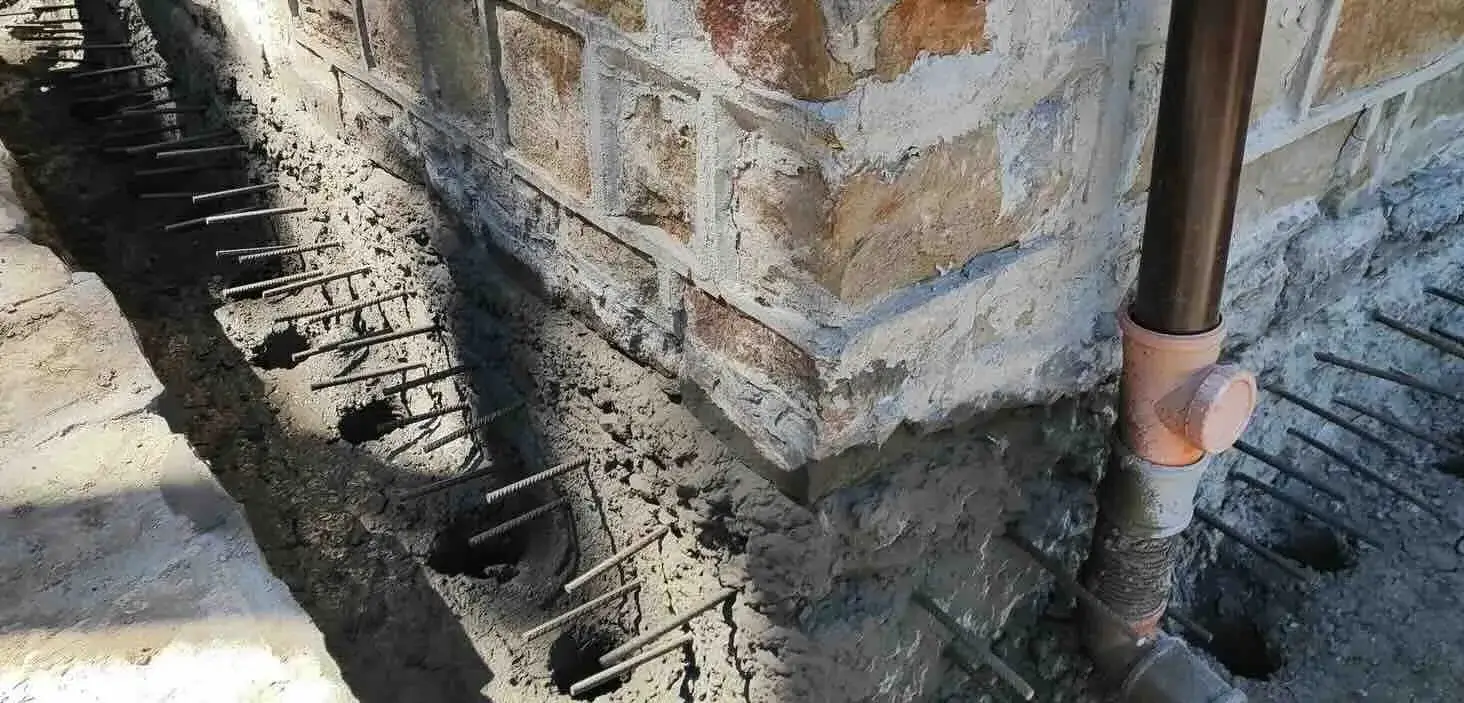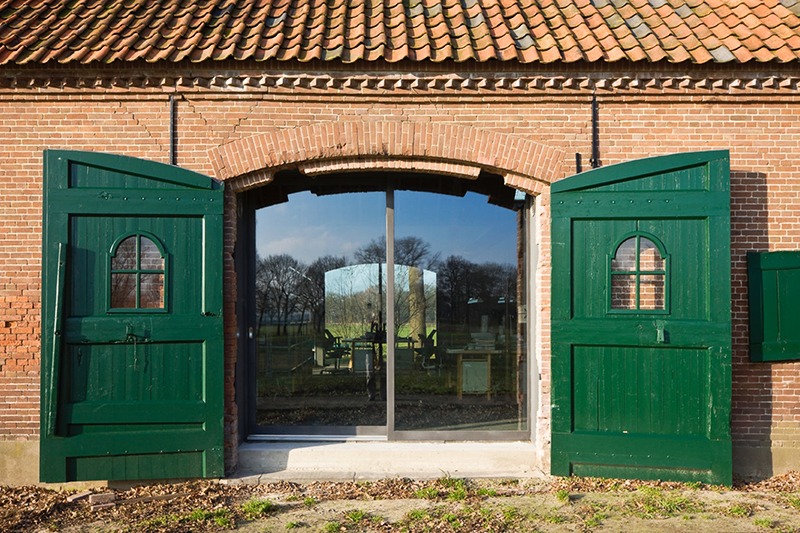Unfortunately, earthquakes are a relatively common occurrence, especially in high seismic risk areas such as Bulgaria and the surrounding region. Recent events in Albania and Croatia confirmed this. Although they were not particularly strong, they caused significant material damage, destroyed buildings, and even human casualties. The Bulgarian team sent to Albania to assess earthquake damage included Dr. Eng. Teodor Todorov from “Renovirai,” the author of this article. The majority of the photo material presented is from his personal archive, taken in the cities of Tirana and Durrës.
What distinguishes earthquakes from other natural disasters is their sudden, unpredictable nature.
The unexpected and destructive nature of earthquakes puts us in a position of entirely preventive measures. Preventive measures can be mainly of two types. The first concerns the safety of the building. The second, the knowledge with which we will meet the moment of the earthquake. And while structural strengthening is an expensive and complex process, knowledge about buildings and the dangers associated with them is significantly more accessible and just as important.
Read more: What is the most dangerous thing for a building?
What are the preventive measures we should take?
First, it is important to have a clear awareness that the occurrence of stronger earthquakes in Bulgaria is not a question of “if”, but rather of “when”. Such earthquakes have occurred and will certainly occur again. Their consequences can be very severe, even catastrophic. This is precisely why it is important to be as prepared as possible for such a future situation.
- Choosing a neighborhood and building to live in
Presumably, the newer a building is, the safer it is. Of course, there are many exceptions. Mostly as a result of unscrupulous builders. However, scientific and technological progress also positively affects building structures. It is high time that the myths about old and quality construction remain a thing of the past.
Read more: New or old construction
A major drawback of the newest buildings built in the last 20 years or so is the weak reinforcement of the partition walls. Combined with the lack of free space for evacuation between buildings in new neighborhoods, falling facades and windows become the main danger for people who managed to leave the buildings. The experience of Albania, as well as other countries, shows the effect of well-designed and implemented structural systems, but poorly reinforced partition walls.


An additional reference point when choosing a home could be the geological map of Sofia or another city in the country. These maps indicate the approximate locations of the faults with the greatest expected damage to buildings.

Preventive preparation
In addition to knowing how to react in such a situation, it is necessary to organize a few simple but vital things in advance.
Reliably fasten all heavier objects to the walls such as wardrobes, refrigerators, display cases. Also, every prepared household should collect all important documents, electronic media and spare keys for cars and real estate in a separate box in advance. For some people, the box may also contain supplies of vital medications such as insulin and inhalers. Important documents include property deeds, passports, health books and records, company documents and other papers. The crisis box should be left in an easily accessible place, ready to be taken within seconds before the evacuation.
During the evacuation
The reaction time is extremely short. If you think you are not able to leave the building within ten seconds, it is better not to try. It is imperative that you have identified the safest possible place in the home in advance. And no – this is not under the door frame! Even less on a balcony! Move away from windows, cabinets, glass display cases and electrical panels. Proximity to the facade walls should also be avoided at all costs. Relatively safe places are close to the building's load-bearing washers, under reinforced concrete girders and near the center of the building.

In old buildings, the attic and the top floor are the most vulnerable places. If you are there, immediately move to a lower floor. A consultation with a specialist can guide you to the safest places, specifically for your home. Standing under sturdy tables and desks can also protect you from falling plaster and cabinets. Which is no small thing. The correct waiting position is curled up into a ball with one hand protecting your head and neck. With the other hand, hold the moving table or desk.

It is always a good idea to have easy-to-put-on shoes on hand. Broken glass is especially dangerous in such situations. If it is cold, don't forget to grab warm clothes or blankets. If you stay in the building for a longer time, try to cover your nose and mouth with a thick cloth. Strong earthquakes inevitably cause plaster and walls to fall, generating a lot of dust. Physical injuries from debris and suffocation are the main factors causing fatalities for occupants.
Nearly 10% of earthquake fatalities are caused by fires that start afterwards. If you have felt the initial tremor, it is advisable to stop the gas supply and turn off the main fuse in the apartment. This action takes a few seconds, but can be crucial for your property and the lives of others in the building.
Critical points during evacuation are the staircases and the building's exits. Needless to say, using an elevator is highly undesirable. However, during an earthquake, staircases also become places with an increased risk of slipping and injury from sharp objects. Fallen plaster and broken glass are a prerequisite for unexpected slips in the chaos of evacuation. Running on them, especially in the dark, poses a huge risk of serious and even fatal injuries. If possible, hold on to the safety railings throughout the descent to the exit. Gathering a large number of people further complicates the situation. It is important to avoid creating panic as much as possible!
Here is what staircases in new buildings look like after the 2019 earthquake in Albania.



 The photos clearly show the many pieces of plaster on the floor, making it extremely slippery. There is also broken glass in the areas around the windows. The large amounts of dust greatly reduce visibility during evacuation. In such a situation, do not panic, do not rush too much and be careful how you step!
The photos clearly show the many pieces of plaster on the floor, making it extremely slippery. There is also broken glass in the areas around the windows. The large amounts of dust greatly reduce visibility during evacuation. In such a situation, do not panic, do not rush too much and be careful how you step!Exits of buildings, in turn, also turn out to be places with increased risk. It is advisable to cover your head with your hand when leaving the building. This can protect you at least partially from falling smaller objects and pieces of glass. It is important to quickly move as far away as possible from surrounding buildings and power lines. The photo shows the pouring of several barrier walls precisely on the exit on the side of the building.


Sometimes even a relatively mild earthquake can detach poorly attached large facade elements.

Actions after successful evacuation and stopping of the first earthquake
Once you have successfully left the building, check yourself and those around you for open injuries. High adrenaline greatly dulls pain. Cuts may not be felt in the first minutes and cause serious blood loss. Provide first aid or assist if there are any injuries.
Unfortunately, it is impossible to predict whether the earthquake you feel will be followed by others, stronger ones. Even seismologists can only make tentative suggestions. Before the occupants return to the building, however, it is imperative to make a few vital, subjective observations. The first is a subjective assessment by the owners of the condition of the building. The presence of cracks, leaning walls, jammed doors and windows is a clear sign of serious damage.

The building has sustained damage that likely made it significantly more vulnerable to a secondary earthquake. There are many cases in which subsequent, weaker earthquakes destroy buildings that survived the main earthquake. If the building has a basement, it should also be at least subjectively inspected. Attention is paid to damage to load-bearing elements such as columns and walls. The basement and ground floors are the most stressed in the structure. Destruction from the bottom up is extremely dangerous and sudden.

If there are any signs of damage, the building should not be occupied before being inspected by a specialist structural engineer.
The second important thing to pay special attention to is the condition of the buildings in the immediate vicinity. Destructions in them can cause a domino effect. The contact between buildings causes enormous, sometimes even fatal damage to the structures.

The third element of the minimum measures that residents can take is to centrally turn off the gas supply and electricity in the building. If you notice cracks on the facade and inside the premises, it is possible that these displacements have caused damage to the gasification and electrical installations. Gas leaks can be small or in places where you will not immediately smell. Over time, however, the concentration of gas in the room may become sufficient for ignition and fire. At the first opportunity, contact specialists before restoring the gas supply. Leave windows open for ventilation.
If damage to the building has already been identified, the next mandatory step is an inspection and consultation with a structural engineer. He must visit the building on site and conduct a detailed inspection of the damage. His initial assessment will clarify whether the building is fit for habitation and whether measures are necessary for its subsequent inspection and strengthening.
If you do end up in the building and are unable to leave, keep your composure and conserve your energy. If you have access to your phone, turn off internet data and GPS tracking. Save battery and use your phone only when necessary!








